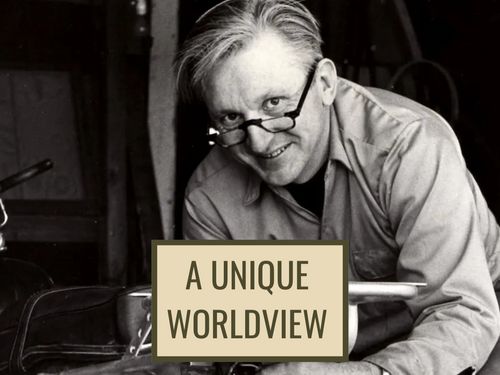The world according to Robert Pirsig
Sep 06, 2021 · 2 mins read
0
Share

The framework we use to understand the world has lasting significance. A man who thinks life is a battle sharpens his weapons, another who thinks life is a mall looks for the discount. In this memo, learn about Robert Pirsig’s mental model for grasping the world.
Save
Share
The lens matter. Pirsig writes, “the culture in which we live hands us a set of intellectual glasses to interpret experience with.” Whatever is built into the glasses appears in the world.
Save
Share
Remove the filter. Pirsig encourages the reader to throw away the social and scientific glasses of their age and look at the world for what it really is: a combination of static and dynamic processes.
Save
Share
The static world. Everything known is part of the static world. A static world keeps the dynamic “outside” at bay with borders. These borders can be physical, social(laws), and intellectual(taboos).The static world has four levels: inorganic < biological < social < intellectual.
Save
Share
Biological beings go further than inorganic chemicals, societies exceed solitary creatures, & an intellect can transcend society. Life progresses across each level but there are always borders: creatures have skin, societies have taboos, and the intellect is fenced in by dogmas.
Save
Share
The dynamic world. Beyond the border lies a dynamic world. There are no categories here, just new information and new experiences. What is dynamic “cannot be contained by any system of precepts.”
Save
Share
The dark side of stasis. The static world becomes stagnant. The fundamental and permanent problem is that no system is truly self-sufficient. The cell needs nutrition from outside, the creature needs air, the societies must trade. Closed-off systems die.
Save
Share
The dark side of dynamism. The dynamic shades into degeneracy. Hard won “evolutionary gains of the past” can be easily lost by recklessly embracing the new. The dynamic individual’s blindspot is societies need more than new stimulus to survive - they need maintenance.
Save
Share
How to build a society that “grows but doesn’t degenerate?” The savior who bring in valuable outside light and the degenerate who bring in outside filth often “look alike, talk alike and break all the rules alike.” The is a problem that doesn’t go away.
Save
Share
Bottom line. Pirsig writes: “Without dynamic quality the organism cannot grow. Without static quality the organism cannot last. Both are needed.” Creating a better world, then, doesn’t look like climbing a mountain. It looks like walking a tight-rope - gracefully.
Save
Share
0